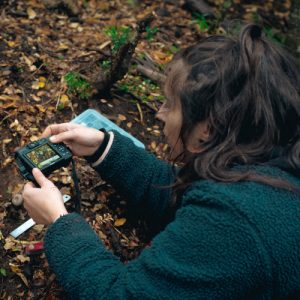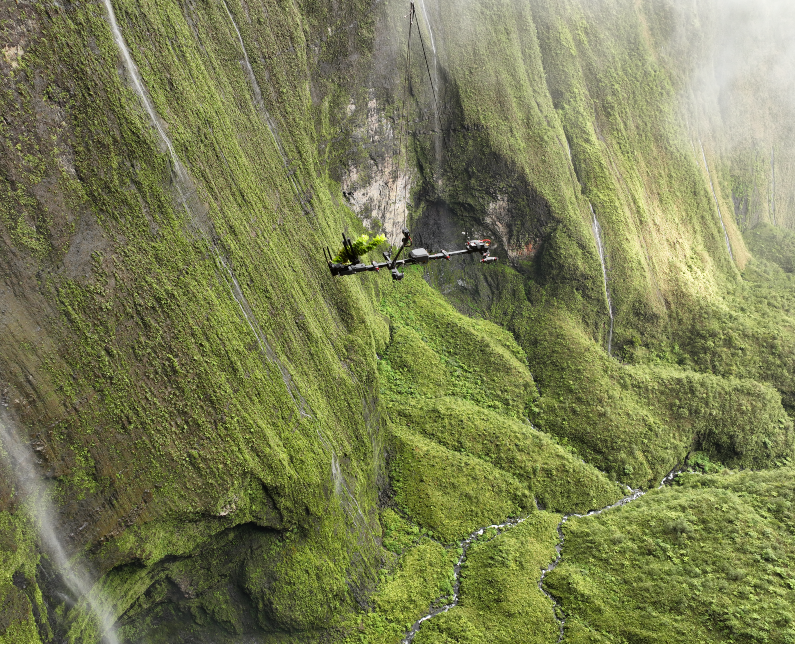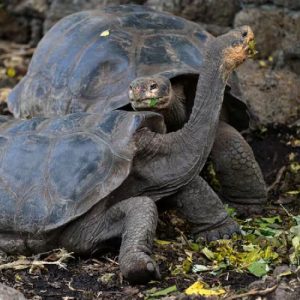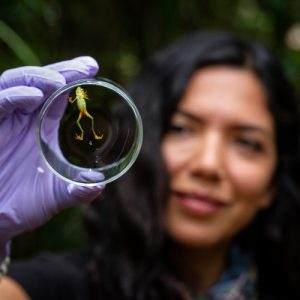In a world where biodiversity is increasingly under threat, the rediscovery of species once believed to be extinct serves as a beacon of hope and a testament to nature’s resilience. Each rediscovery not only reignites our fascination with the natural world but also highlights the vital importance of conservation efforts. These remarkable moments remind us that hidden treasures still exist within our ecosystems, waiting to be found. At the Fund, we’ve had the privilege of supporting and co-funding numerous rediscoveries among the 3,000 projects we’ve backed over the years.
Speak to any scientist, and they will tell you that the highlight of their conservation career would be to discover a new species, with a close second being the rediscovery of a species thought to be extinct. As a funder, being involved in the rediscovery of a new species or taxa, or finding a species not reported for decades, is a dream come true, as explained by our Acting Director General, Nicolas Heard.
Conservationists employ various methods to search for species, from researchers conducting field surveys and employing citizen science initiatives to collecting sightings and valuable data. Historical research into past records and habitats, coupled with collaboration with local experts, further enhances their search efforts. In some cases, more advanced techniques have become necessary to detect elusive species.
Meet Fern, she’s one of a kind
A good example of these efforts is the case of “Fern.” In February 2019, the MBZ Fund co-funded genetic analysis on a giant tortoise discovered in the Galapagos National Park, led by the Directorate and Galápagos Conservancy. The grant provided funding specifically for DNA analysis, which confirmed that this female tortoise was indeed a Fernandina giant tortoise, a species last reported in 1906. Giant tortoises have played a crucial ecological role in the Galapagos Islands for over a million years, shaping the biological landscape in ways that benefit the islands’ extraordinary flora and fauna. This rediscovery is particularly significant, as only about 10% of the more than 300,000 tortoises that once inhabited the islands remain today.
Using technology to explore the inaccessible
Modern technology coupled with an ‘out the box’ approach has also proved to be a winning formula. In Hawaii, Ben Nyberg from the National Tropical Botanical Garden used drone technology to conserve the critically endangered Lysimachia iniki, a cliff-dwelling plant found only on the island of Kauaʻi. Initially, discovered and described by botanists after Hurricane Iniki broke pieces from the cliffs above, conservation of the species has been difficult given its habitat exclusively on 1,000m cliffs. Drone technology helped locate unknown plants growing in inaccessible areas, and following the discovery, Ben and his team deployed a newly developed drone with a cutting arm to gather seeds and cuttings from plants growing 500m up the cliff.
The remotely collected plants were nurtured and cared for in a conservation nursery, and on the 3rd June another massive conservation win – a helicopter delivered the plants (and botanists) into the remote reaches of Kauaʻi where the plants were reintroduced back into the wild. These exciting new tools are proving to be valuable in the quest to prevent plant extinction.
Retracing steps in search of species
When searching for species thought to be extinct, revisiting their last known locations is often a sound strategy. Funding often enables the effort, which Fungi Foundation in Chile, took to heart when they set out to rediscover the big puma fungus (Austroomphaliaster nahuelbutensis), an enigmatic species that lives underground in Chile’s Nahuelbuta Mountains and had not been documented for 40 years. Thanks to the support of the Mohamed bin Zayed Species Conservation Fund and other donors, they embarked on an expedition to the temperate forests of the Nahuelbuta Mountains in May 2023, retracing the steps of Chilean mycologist Norberto Garrido, who first documented the fungus in 1988.
Discovering sustainable conservation
Rediscovering species is vital not only for biodiversity conservation but also creating alternative livelihoods to ensure sustainable conservation. Alejandro Arteaga, founder of the Khamai Foundation and a former researcher turned conservationist, exemplifies this. After rediscovering the Harlequin Toad (Atelopus mindoensis), he was dismayed to find its habitat completely destroyed upon returning for a follow-up. In response, he devised a solution: purchase land to preserve the species and prevent further habitat degradation.
Within the newly acquired piece of land on the Arlequín Reserve, biologists from the Khamai Foundation established a small hut as a research base. To advance their goal of creating a fully self-sustainable conservation effort, they opened the cabin as an Airbnb rental. This initiative allows the public to enjoy the beauty of nature while funding the census of the Mindo Harlequin Toad.
Rediscovering species once thought to be lost not only reignites hope for biodiversity but also highlights the critical role of people and collaboration in conservation efforts. As a donor, each rediscovery serves as a reminder that every dollar invested in protecting our planet can lead to extraordinary outcomes for future generations.




